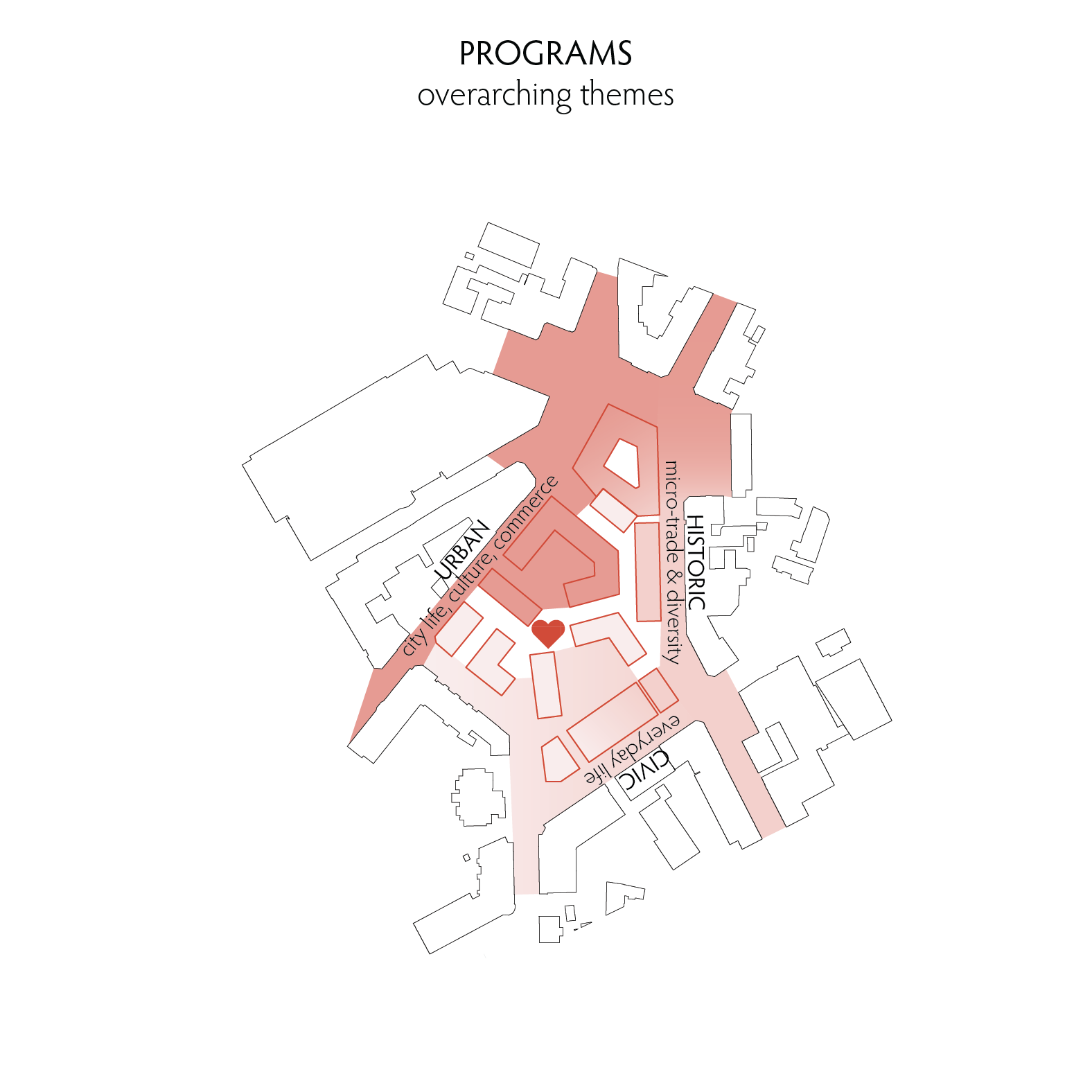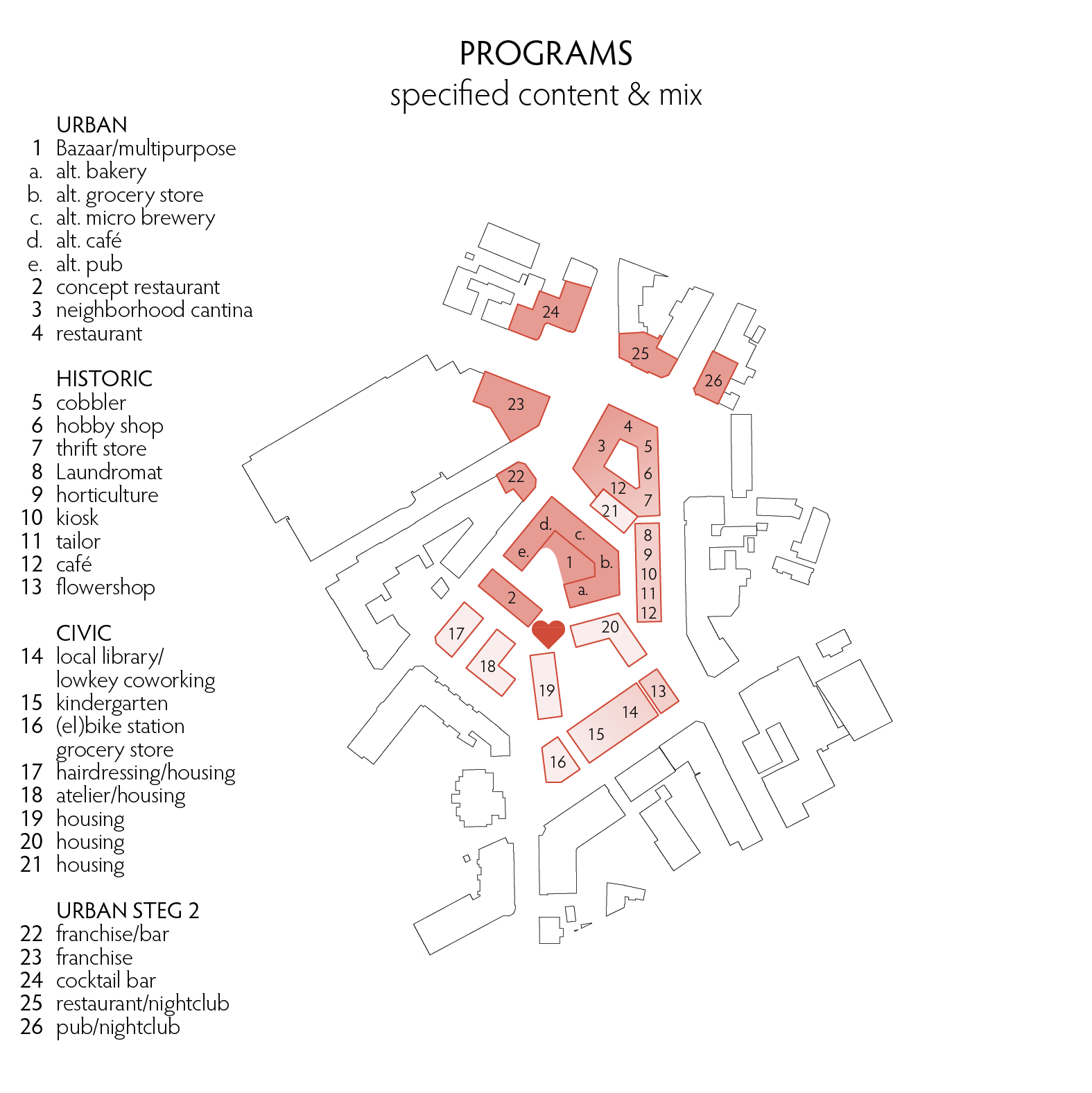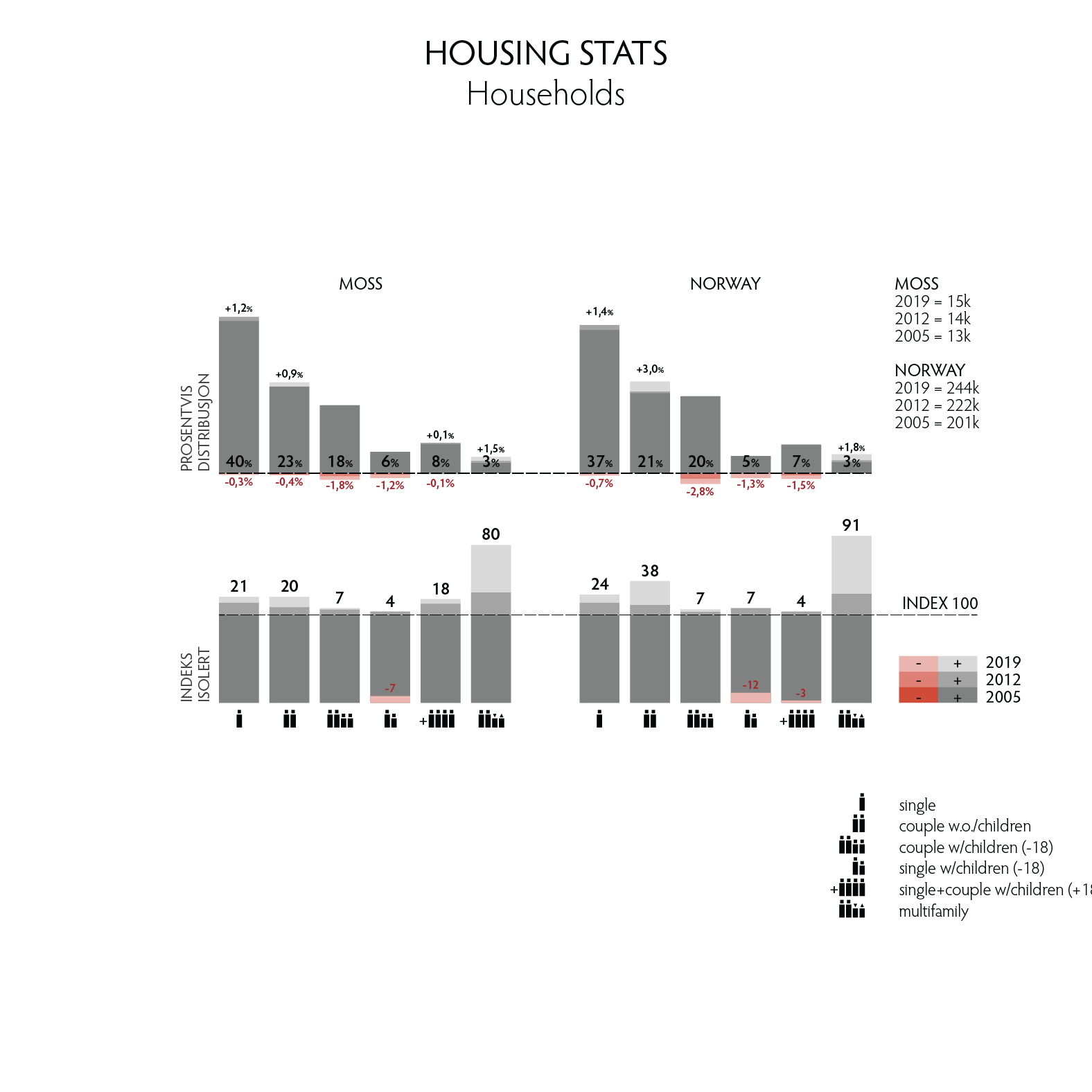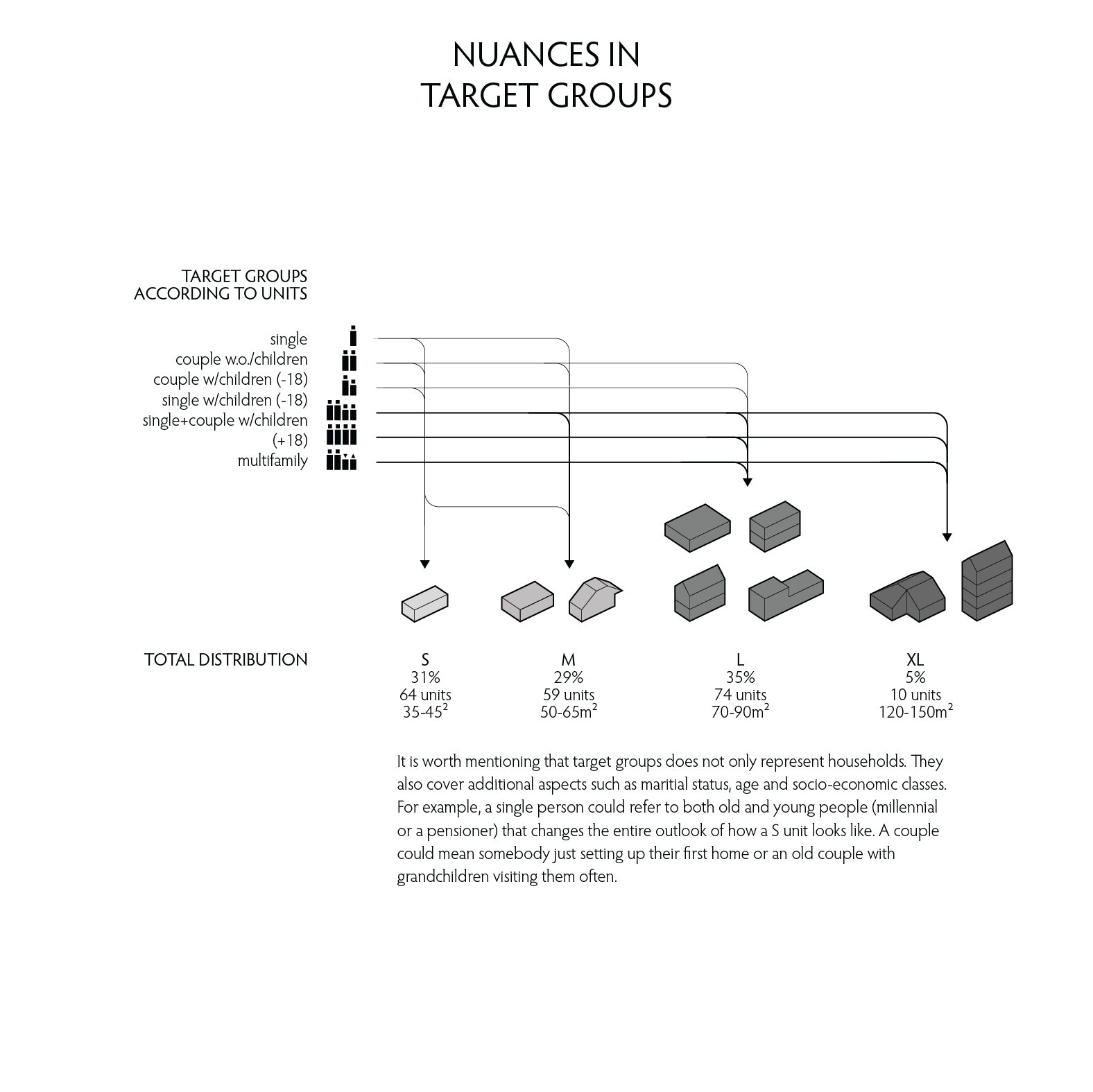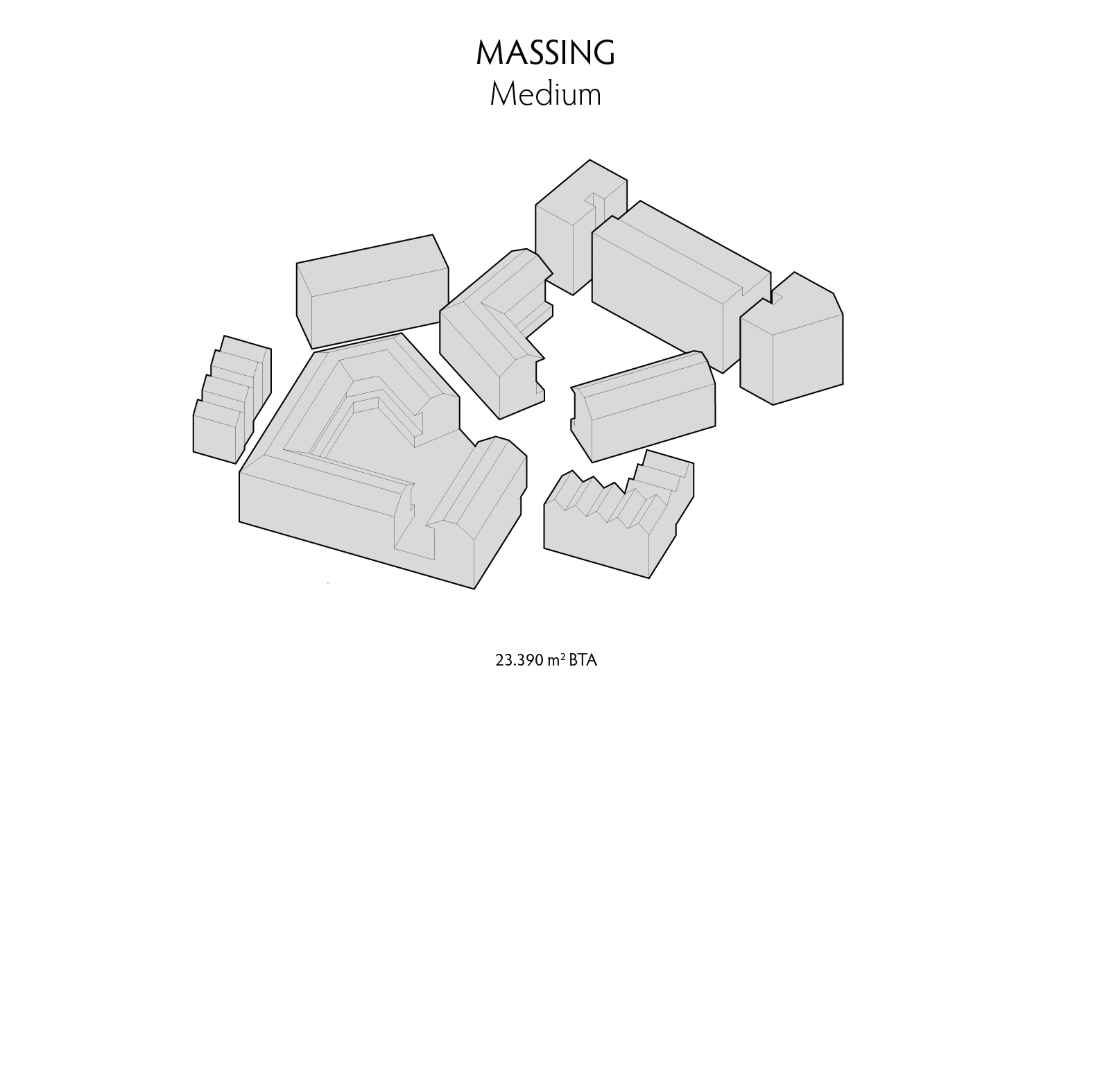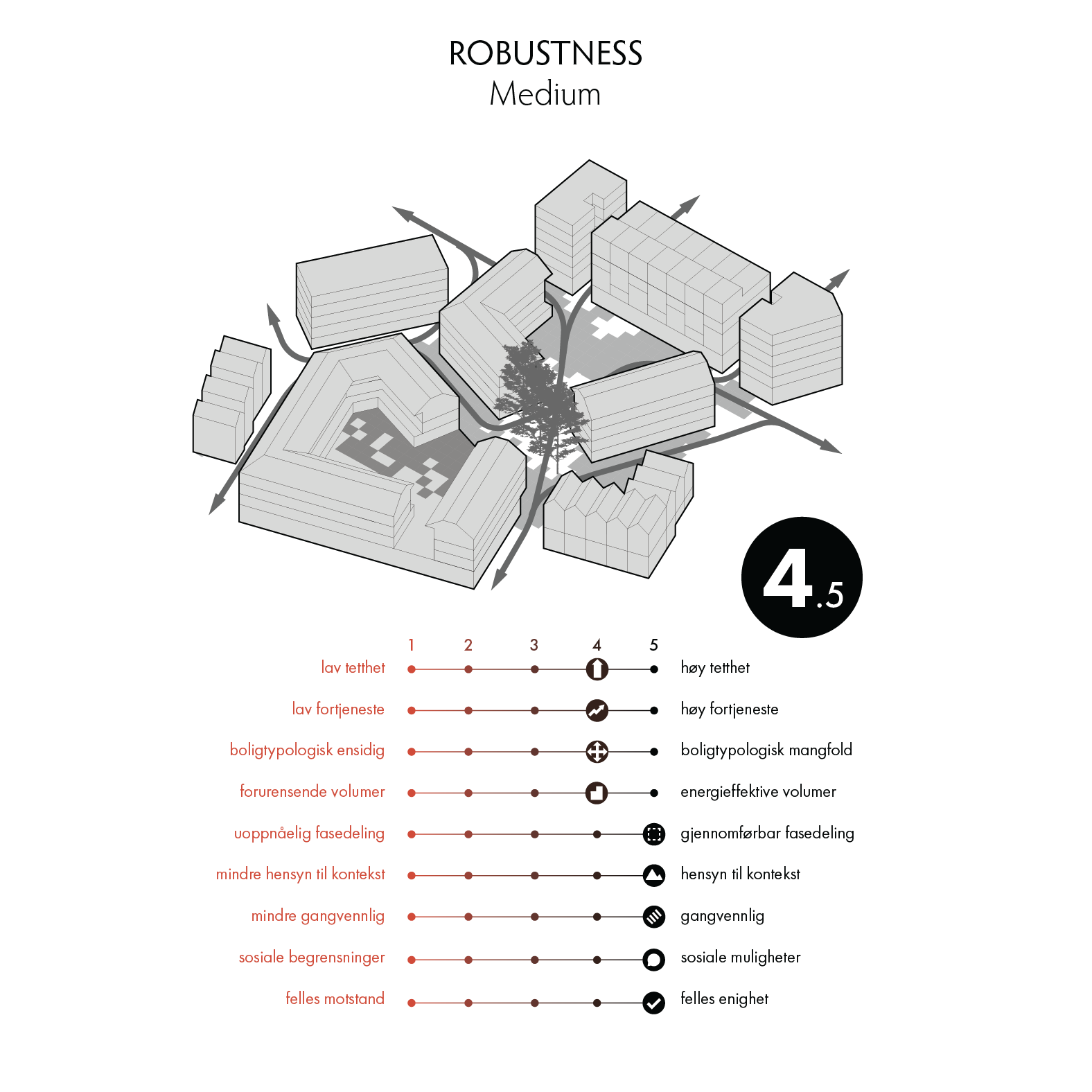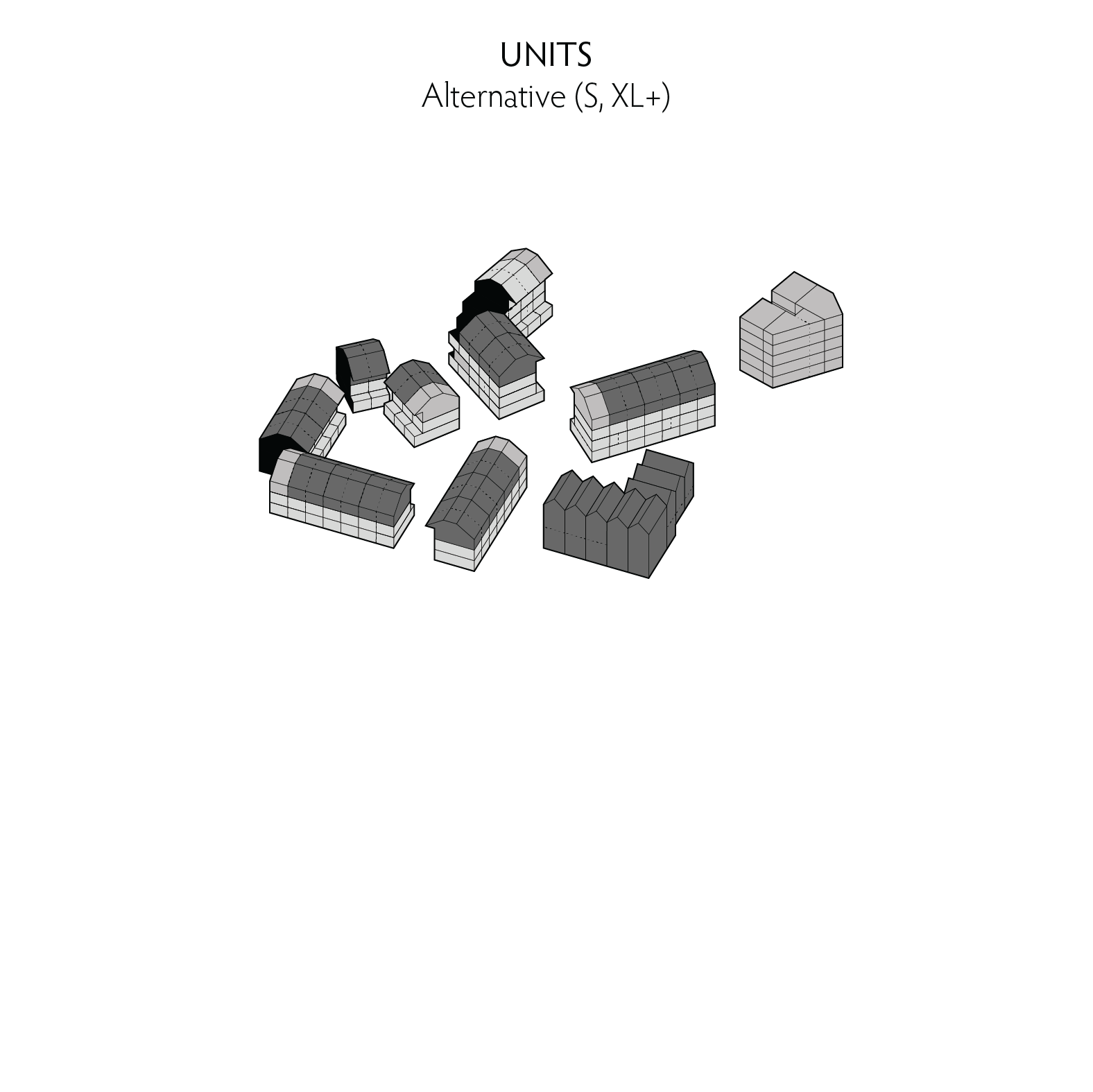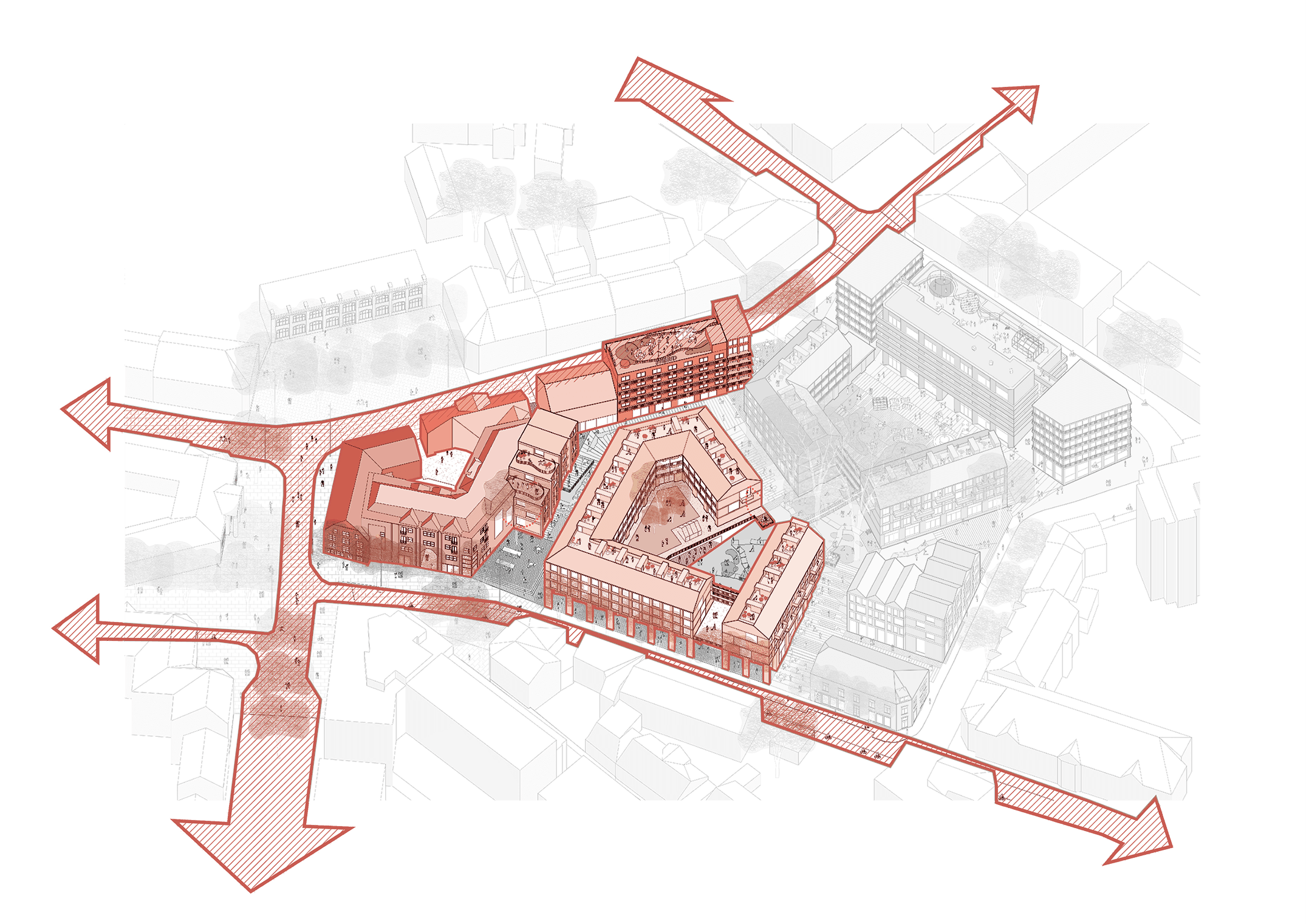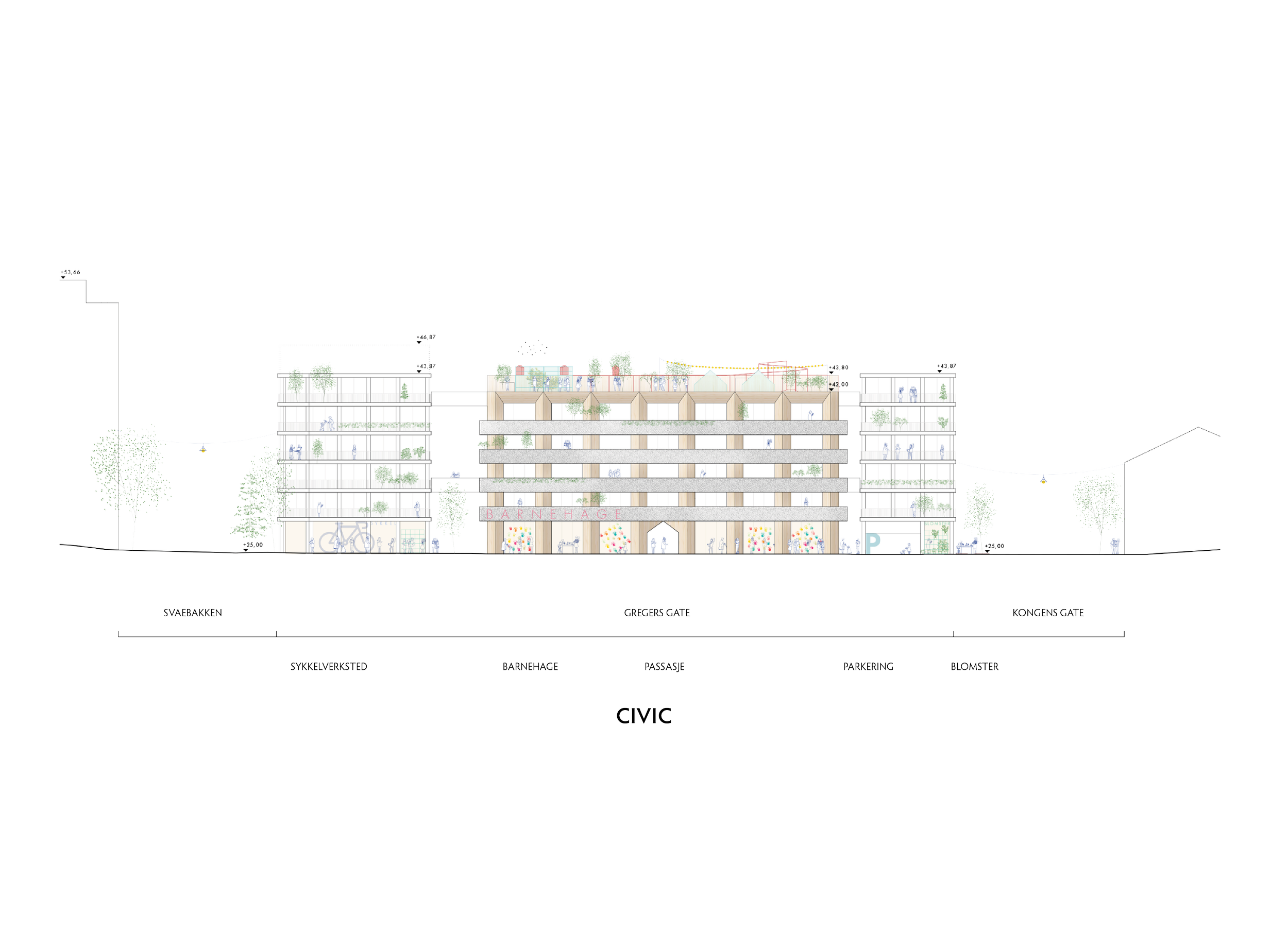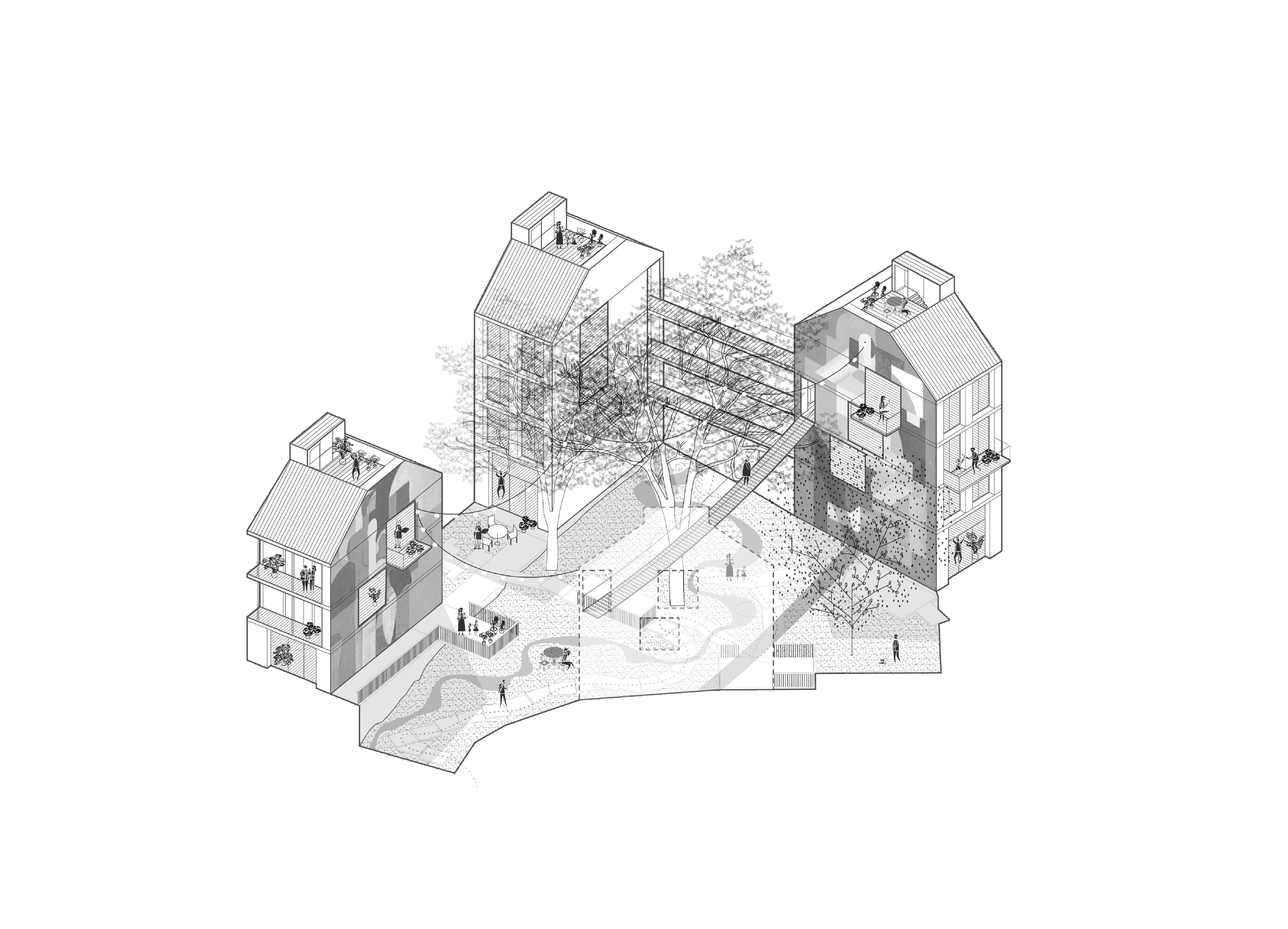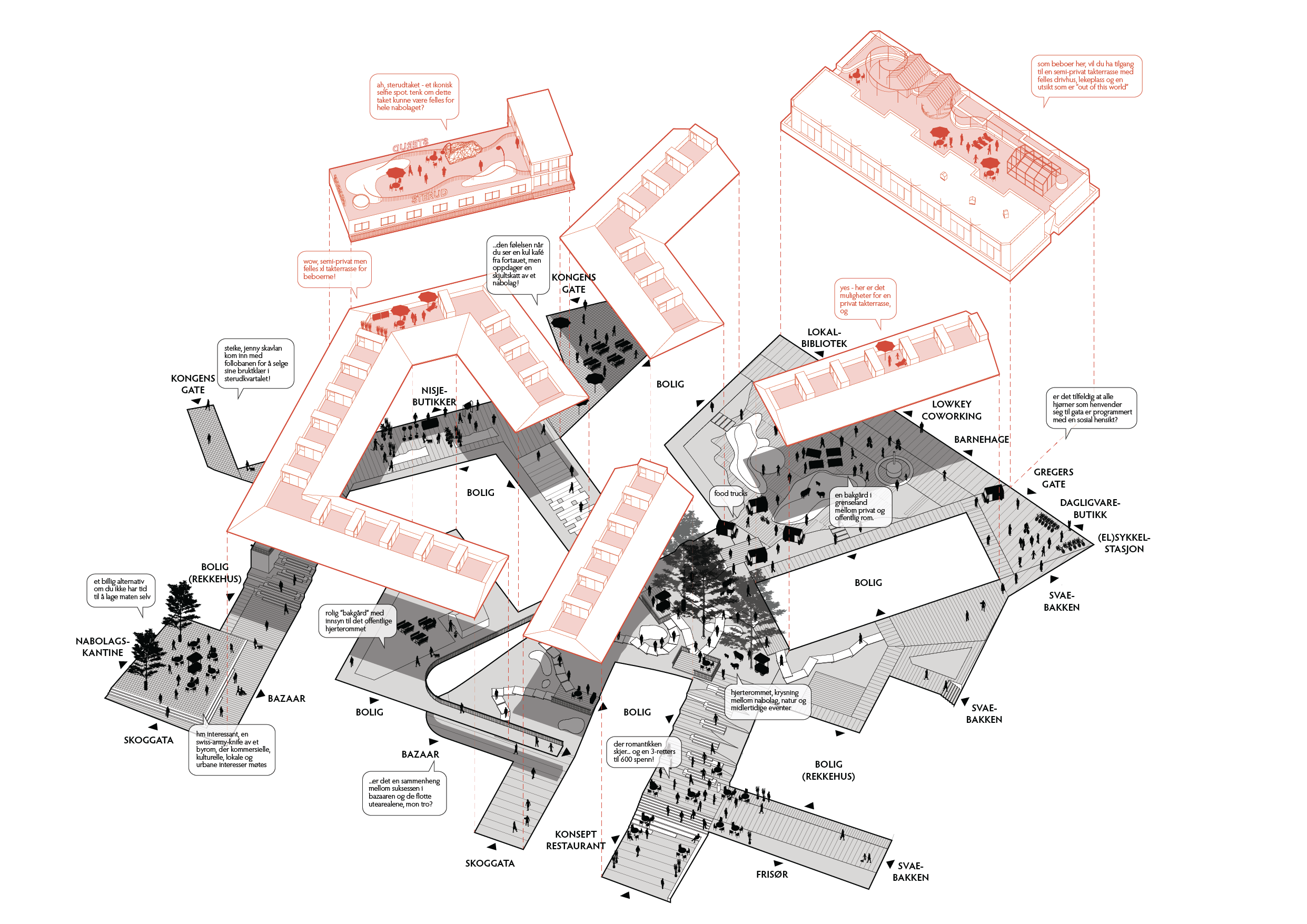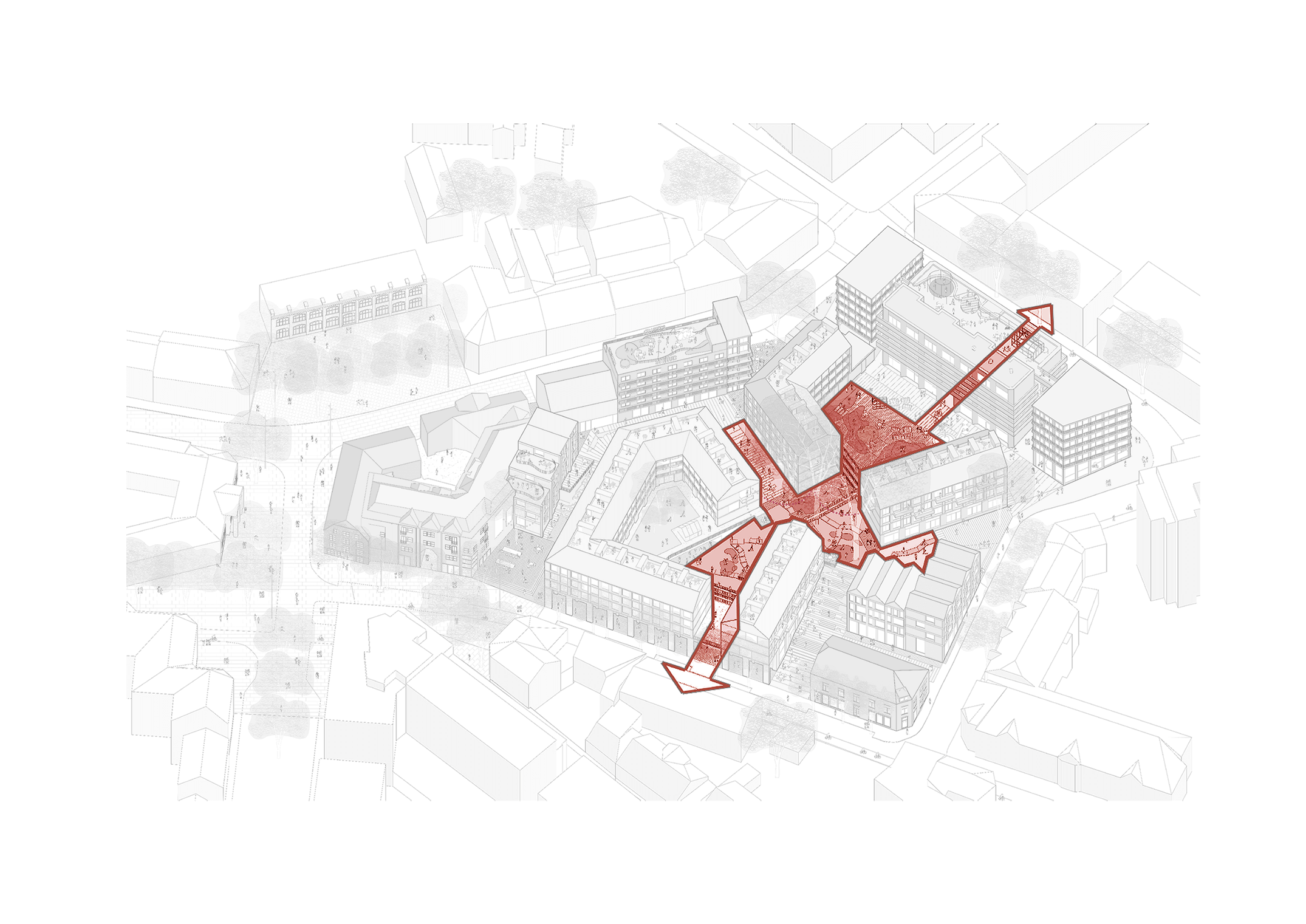
Sterudkvartalet
-
2019
-
Moss, Norway
-
23.390 m2
-
commercial, housing, city centre
-
-
Proposal
The critical piece of data that changed the conventional wisdom of Moss: a 10 min shorter travel time (due to Follobanen) from Moss to Oslo in the southern axis, showed that the people living and working in the same municipality decreased with more than 20% (Y-factor: Moss 48% to Ski 36%). Meaning, Moss is more likely to be in danger of losing out on a local culture (Y) rather than enrichening one, with the introduction of Follobanen.
Resulting in these myths/assumptions being proven false: Moss is a working class society where the majority commutes out to other places, and a new and faster railway Follobanen will bring with it only prosperity and benefits for Sterudkvartalet, Moss. If these datasets on are correct, then aspects such as the local history & -culture, place identity & -geography will prove crucial for the architectural/urban ambition for Sterudkvartalet. Moss has to distinguish itself, if it is to function as a competitive alternative to Oslo.
A closer look on the demographics did not only show a city that was on par with any other Norwegian city in terms of education and knowledge industries, but it also revealed a city very proud of its working class roots. The architectural ambition was to embody the Moss vernacular - the everyday life (five key findings): different housing typologies, family qualities, agriculture, and what it was missing: franchises and life after 17:00. These are the different methods utilised to improve decision making and pinpoint the most suitable design scheme for Sterudkvartalet, based on local parameters such as perceived well-being, urbanity, culture, perception, commerce, market, revenues, technicalities etc. The dataset for this entry was gathered through SSB, interviews with the Bylab/municipality, and site visits/meetings with the jury.
Five key findings - based on interviews and observations in the city centre spanning several years.
Programs - suggestions on overarching themes (urban, historic, civic) and program mix, rooted in current tendencies.
Housing stats - indications of dominating housing types and users in Moss.
Target groups & response - a translation and selection of stats and demographics into one coherent proposal for Sterudkvartalet.
Massing - studies of different density.
Robustness - a representative score given based on pros and cons of different parameters within architectonic, social and financial viability.
Units - the fixed and flexible units within the design scheme.
Frequency - how the various combinations of units affects the frequency or success of commercial concepts on ground floor.
Core - how the various combinations of units dictates the number of cores.
Overarching Themes
The overarching themes (urban, historic, civic) embodied the ambition of expanding upon the shortcomings of the Moss vernacular. Constellations in the urban theme had a commercial flexibility as a result of housing units/typologies, the historic unlocked the possibilities of quality niche shops in the city, the civic introduced the everyday life at the core of Moss. An extra theme was introduced (green) - how the landscape becomes part of the public, private, semi-public and -private life of the residents and visitors.


